A Prosumer-Oriented, Interoperable, Modular and Secure Smart Home Energy Management System Architecture
Abstract
:1. Introduction
1.1. Smart Home Energy Management
1.2. Contribution of This Paper
2. State of the Art and Related Work
2.1. Architecture and Security
2.2. Ontological Background
3. Proposal
3.1. Energy Management Components
- Home Automation System (HAS): in charge of communication back and forth with the Home Automation System, keeps it updated regarding energy budgets, production and accumulation status and current consumption. High-level information produced by other components, can be used by the HAS to provide home occupants with energy-related decision support tools and notifications. It also updates the KB with information from the HAS, such as devices inventory, appliance status and scheduling, presence and occupancy information as well as information coming from external sources, such as real-time weather information and forecasts. This information can be used to build and feed different DER and energy consumption forecast models and allow the HEMS to plan and adapt to changing conditions.
- Distributed Energy Resource (DER): is responsible for dealing with energy resources, both for energy production and accumulation. Its purpose is to: (a) to produce high-level information, such as production and storage forecasts needed by the Home Energy Controller (HEC) component (5) and (b) to operate the different DERs safely, trying to minimise energy costs for the home and (c) cooperating with HEC for DR strategies implementation.
- Home Energy Gateway (HEG): updates the status of the grid-tie, whether we are injecting or consuming power from the grid, as well as pricing information and contractual parameters (e.g., maximum usable power). It can also relay energy information back to the utility company, such as energy usage schedules and forecasts, appliance inventory and usage patterns and, in general, any information that the homeowner is willing to share that can help the utility company to offer a better deal to the client. It is also responsible for communicating DR strategies, such as flexibilities or acting as a relay for Packetized Energy Management (PEM) brokering with the grid (or micro-grids) and keeping track of total grid energy costs.
- Device: represents devices whose energy management can be dealt with directly by the HEC component (5). Examples of such devices would be big consumers, continuously-running appliances like HVAC or heating systems, swimming pool pumps, water heaters and electric vehicles, whose energy consumption schedule can impact to a great extent on home energy management and usually can be re-scheduled or curtailed under certain conditions with minimal to no impact for the home occupants. Usually, these devices will be the most critical ones in DR strategies such as flexibility management.
- Home Energy Controller (HEC): in charge of control and optimisation. It can make use of different strategies and techniques, from semantic reasoning to the use of traditional optimisation methods or artificial intelligence. Its purpose is to deal with and mediate between components, ensuring that the energy budget is optimised and providing useful high-level information to be shared with others, such as HAS (1) and HEG (3).
3.2. Knowledge Base
3.3. Functional Architecture
- Control Layer: this is the core of the management system, where all the modules related to the HEC component coexist. This layer is responsible for the strategy and the scheduling. It will try to realise the global system objectives by working with the information provided by the remaining components. To both: accrue data from the Interaction Layer (3) and send back directives regarding scheduling and any operational parameters, any modules in this layer will use the Context Broker component, placed in the Context Management Layer (2). The orchestration of the system, by which the rest of the EMCs are controlled, is further described in Section 3.7.
- Context Management Layer: this layer acts as the information backbone of the system, providing several mechanisms and characteristics that enable the interoperability and modularity of the system. The main feature of this layer is that it is based on the European Telecommunications Standards Institute (ETSI) NGSI-LD (Next Generation Service Interfaces for Linked Data) [44] standard: evolution of NGSI, both of them used as the communications standard of the FIWARE [45] project. The CB is the component responsible for making all the information (context) of the KB accessible, as well as the provider of means to search, access and update that context. Its specific characteristics and details regarding the communication between components, the ontological foundation and the structure of the information model are described. This layer also holds the historic component, responsible for storing selected historical information (used for forecasting and data analysis) and making it available to EMCs. Both the CB and the historic component can be instantiated from the many already available implementations of FIWARE Generic Enablers, promoting re-usability.
- Interaction Layer: this layer comprises all the components responsible for interacting with the devices and entities related to the HEMS. It is the boundary layer of the SHEMS with the rest of the SH and the world, acting as an adaptor between the internal NGSI-LD interfaces and the different external interfaces. It is through this layer that information from devices, the grid, DERs and the HAS, reach the KB. It is also in this layer that the management of the system crystallises in specific commands sent to devices or communications with external services. Finally, all semantic adaptation between the SHEMS and the devices, services and external agents will take place in this layer.
- Security & Privacy: lastly this layer permeates the whole system. It is responsible for ensuring secure data access as well as privacy. It mediates the information exchange between the components and the KB, providing authentication and authorisation components for access control to the CB and other components in the architecture. The components that form the security and privacy layer and their operation are further described in Section 3.6.
3.4. Information Model
3.5. Context Management
3.6. Security and Privacy
- Identity Management (IdM) component: provides the authentication service to the architecture. It stores identity information together with attributes that will be later used by the authorisation component. In our architecture, we propose the use of standard interfaces, such as OAuth 2 [48] and OpenID Connect [49].
- Capability Manager (CM) component: acts as the authorisation facade for components, granting or denying access to the requested resource. It receives requests from components and interacts with the IdM and the PDP to perform its task.
- Policy Decision Point (PDP) component: validates requests using identity information against the set of XACML (eXtendible Access Control Markup Language [17]) policies stored in the system. Those policies are managed via the next component in the list: the PAP.
- Policy Administration Point (PAP) component: offers a single administration point to manage the policies for the system. Policies are stored in XACML, defined as conditions that a subject must meet to act on a resource. In this case, the conditions can be based on attributes from the IdM identity, the actions are HTTP verbs and the resources are HTTP resources, represented as URLs.
- Policy Enforcement Point (PEP) component: act as a transparent reverse HTTPS proxy, which enforces the verdict issued by the PDP, without the need for further XACML policy evaluation.
3.7. System Orchestration
4. Validation
4.1. Test-Bed Description
4.2. Tasks
- To manage battery accumulation parameters (maximum SOC and Depth Of Discharge (DOD), charging and discharging regimes and the likes), schedule and manage battery charging and manage stored energy usage.
- To schedule and manage the central heating system, as well as HVAC.
- To schedule and manage swimming pool filtration and chlorination system.
- To react to inhabitants’ actions that offset the expected energy profiles.
- To inform the user about energy consumption patterns and energy management status, raise alerts and provide energy-related suggestions to improve efficiency and reduce consumption.
4.3. Knowledge Base and Security Components
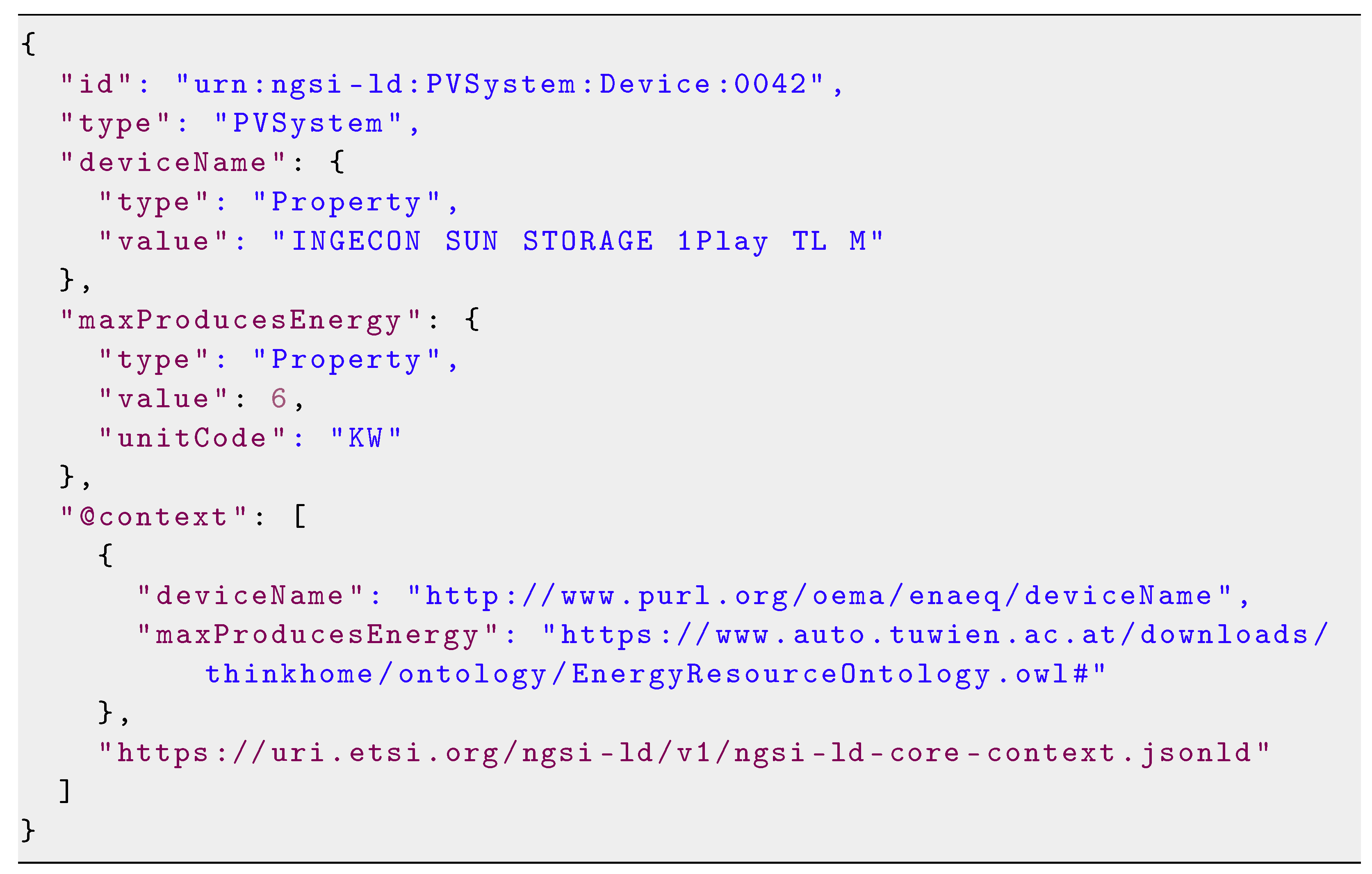


4.4. Energy Management Components
- HAS: it communicates with the Home Assistant instance of the test-bed. It draws information from it regarding weather forecasts, sensor data and home occupation and updates it on the KB for other EMCs to use. It also receives messages from the HEC, to notify users about different conditions. The interaction between the HAS component and Home Assistant takes place via REST API, leveraging Home Assistant’s user notification mechanisms (Figure 17).
- HVAC and Heating devices: these devices were already integrated into Home Assistant, utilising custom ESP8266 devices and the ESPHome [56] integration in Home Assistant. These devices offer another REST API to interact with, which we have leveraged due to its simplicity and to avoid using Home Assistant as an intermediary to interact with them. Currently, their components only send status updates to the KB and support stopping temporarily the operation upon request from the HEC (via the orchestration mechanism) to avoid overloading the grid input. In the future, operation scheduling for the heating system could be implemented and integrated into the energy management strategy, as well as operation forecasting for the HVAC to predict when users want to use it.
- Espresso machine device: this device is controlled via a smart plug (see Table 4), allowing users to remotely turn the machine on or off. This device is (also) integrated into Home Assistant [57]. This time we have opted to implement its component interacting with Home Assistant’s REST API, instead of interacting directly with the smart plug. The reason behind this decision is merely to save effort by re-using Home Assistant’s API. In the current implementation, it only updates real-time energy consumption and status (on/off) in the KB, but in the future, we expect to be able to better integrate it into the SHEMS by implementing other features such as operation forecasting and scheduling.
- Pool device: the pool filtration EMC has been directly built into its controller (which is also based on Node-RED). It updates operation status and real-time power consumption in the KB. It also requests an operation schedule to the HEC for the number of hours of filtration that it deems appropriate, based on weather forecasts retrieved from the KB (which are updated by the HAS component). This component also reacts to HEC’s inputs (through orchestration mechanism) to temporarily stop/resume operation.
- PV and battery DER: the component responsible for the PV array and battery interacts with the inverter via Modbus-TCP (Figure 18). The current implementation of the controller updates in the KB, real-time production and SOC of the batteries. Once the battery is finally installed, we plan on developing the mechanism to receive from the HEC messages to update its maximum SOC and DOD to optimise battery usage.
- HEG: this component updates in the KB the real-time power input/output as measured in the grid tie power meter, to which it is connected via Modbus. It also updates the maximum power that the grid-tie can deliver as well as the maximum it can be fed from the PV installation. This component also retrieves the hourly prices of electricity, both consumed from the grid and fed-in, from ESIOS [58] via REST API, according to the Spanish PVPC tariff, although the current test-bed electricity contract is a constant-price one.
- HEC: the current implementation of this component is capable of generating schedules for electricity consumption upon request, trying to maximise PV-generated electricity usage. It currently does so by using forecast cloud coverage information (coming from the HAS component) as well as expected sunset and sundown times. It also reacts to notifications regarding high-consumption devices and takes decisions based on the current energy budget (PV, battery and grid) to signal viable devices to temporarily stop operation. Finally, it also notifies users through the HAS component (Figure 17) when: (a) the grid energy import reaches 80%, (b) when high-consumption devices are active and the home is not occupied and (c) when contingency mechanisms (such as temporarily stopping operation of a device) have been implemented.
4.5. Results
5. Discussion
6. Conclusions and Future Work
Author Contributions
Funding
Data Availability Statement
Conflicts of Interest
Abbreviations
| CB | Context Broker |
| CM | Capability Manager |
| CT | Capability Token |
| DER | Distributed Energy Resource |
| DOD | Depth Of Disch |
| DR | Demand Response |
| EMC | Energy Management Component |
| HAS | Home Automation System |
| HEC | Home Energy Controller |
| HEG | Home Energy y Gateway |
| HEMS | Home Energy Management System |
| HVAC | Home Ventilation and Air Conditioning |
| IdM | Identity Management |
| IdT | Identity Token |
| IoT | Internet of Things |
| KB | Knowledge Base |
| OWL | Web Ontology Language |
| PAP | Policy Administration Point |
| PDP | Policy Decision Point |
| PEP | Policy Enforcement Point |
| PV | Photo-Voltaic |
| SG | Smart Grid |
| SH | Smart Home |
| SHEMS | Smart Home Energy Management System |
| SOC | State Of Charge |
References
- Almeida, J.; Soares, J. Integration of electric vehicles in local energy markets. In Local Electricity Markets; Elsevier: Amsterdam, The Netherlands, 2021; pp. 21–36. [Google Scholar] [CrossRef]
- Gonçalves, I.; Gomes, Á.; Henggeler Antunes, C. Optimizing the management of smart home energy resources under different power cost scenarios. Appl. Energy 2019, 242, 351–363. [Google Scholar] [CrossRef]
- Yang, Q.; Ehsan, A.; Jiang, L.; Fang, X. Optimal energy dispatch in residential community with renewable DGs and storage in the presence of real-time pricing. In Smart Power Distribution Systems: Control, Communication, and Optimization; Elsevier: Amsterdam, The Netherlands, 2018; pp. 447–465. [Google Scholar] [CrossRef]
- IEA. Electricity Market Report; Technical Report; IEA: Paris, France, 2022. [Google Scholar]
- Home Assistant Website. Available online: https://www.home-assistant.io (accessed on 22 July 2022).
- Domoticz Website. Available online: https://domoticz.com (accessed on 22 July 2022).
- OpenHab Website. Available online: https://www.openhab.org (accessed on 22 July 2022).
- Singh, P.; Masud, M.; Hossain, M.S.; Kaur, A. Blockchain and homomorphic encryption-based privacy-preserving data aggregation model in smart grid. Comput. Electr. Eng. 2021, 93, 107209. [Google Scholar] [CrossRef]
- Milchram, C.; van de Kaa, G.; Doorn, N.; Künneke, R. Moral Values as Factors for Social Acceptance of Smart Grid Technologies. Sustainability 2018, 10, 2703. [Google Scholar] [CrossRef]
- Badar, A.Q.H.; Anvari-Moghaddam, A. Smart home energy management system—A review. Adv. Build. Energy Res. 2022, 16, 118–143. [Google Scholar] [CrossRef]
- Lashkari, B.; Chen, Y.; Musilek, P. Energy management for smart homes-state of the art. Appl. Sci. 2019, 9, 3459. [Google Scholar] [CrossRef]
- Mahapatra, B.; Nayyar, A. Home energy management system (HEMS): Concept, architecture, infrastructure, challenges and energy management schemes. Energy Syst. 2019, 13, 643–669. [Google Scholar] [CrossRef]
- Cuenca, J.; Larrinaga, F.; Eciolaza, L.; Curry, E. Towards cognitive cities in the energy domain. In Studies in Systems, Decision and Control; Springer International Publishing: Berlin/Heidelberg, Germany, 2019; Volume 176, pp. 155–183. [Google Scholar] [CrossRef]
- Machorro-Cano, I.; Alor-Hernández, G.; Paredes-Valverde, M.A.; Rodríguez-Mazahua, L.; Sánchez-Cervantes, J.L.; Olmedo-Aguirre, J.O. HEMS-IoT: A big data and machine learning-based smart home system for energy saving. Energies 2020, 13, 1097. [Google Scholar] [CrossRef] [Green Version]
- Elshaafi, H.; Vinyals, M.; Grimaldi, I.; Davy, S. Secure Automated Home Energy Management in Multi-Agent Smart Grid Architecture. Technol. Econ. Smart Grids Sustain. Energy 2018, 3, 4. [Google Scholar] [CrossRef]
- Open Services Gateway Initiative Website. Available online: https://www.osgi.org (accessed on 22 July 2022).
- Xtendible AccessControl Markup Language Website. Available online: http://docs.oasis-open.org/xacml/3.0/xacml-3.0-core-spec-os-en.html (accessed on 22 July 2022).
- Hippolyte, J.L.; Howell, S.; Yuce, B.; Mourshed, M.; Sleiman, H.A.; Vinyals, M.; Vanhee, L. Ontology-based demand-side flexibility management in smart grids using a multi-agent system. In Proceedings of the IEEE 2nd International Smart Cities Conference: Improving the Citizens Quality of Life, ISC2 2016, Trento, Italy, 12–15 September 2016; pp. 1–7. [Google Scholar] [CrossRef]
- Zhang, J.; Li, Q.; Schooler, E.M. IHEMS: An information-centric approach to secure home energy management. In Proceedings of the 2012 IEEE 3rd International Conference on Smart Grid Communications, SmartGridComm 2012, Tainan, Taiwa, 5–8 November 2012; pp. 217–222. [Google Scholar] [CrossRef]
- Shah, N.; Chao, K.M.; Zlamaniec, T.; Matei, A. Ontology for home energy management domain. In Communications in Computer and Information Science; Springer: Berlin/Heidelberg, Germany, 2011; Volume 167, pp. 337–347. [Google Scholar] [CrossRef]
- Rossello-Busquet, A.; Soler, J.; Dittmann, L. A novel home energy management system architecture. In Proceedings of the 2011 UKSim 13th International Conference on Modelling and Simulation, UKSim 2011, Cambridge, UK, 30 March–1 April 2011; pp. 387–392. [Google Scholar] [CrossRef]
- Reinisch, C.; Kofler, M.J.; Iglesias, F.; Kastner, W. Thinkhome energy efficiency in future smart homes. Eurasip J. Embed. Syst. 2011, 2011, 104617. [Google Scholar] [CrossRef]
- Saba, D.; Sahli, Y.; Hadidi, A. An ontology based energy management for smart home. Sustain. Comput. Inform. Syst. 2021, 31, 100591. [Google Scholar] [CrossRef]
- Saba, D.; Sahli, Y.; Abanda, F.H.; Maouedj, R.; Tidjar, B. Development of new ontological solution for an energy intelligent management in Adrar city. Sustain. Comput. Inform. Syst. 2019, 21, 189–203. [Google Scholar] [CrossRef]
- Haghgoo, M.; Sychev, I.; Monti, A.; Fitzek, F.H. SARGON—Smart energy domain ontology. IET Smart Cities 2020, 2, 191–198. [Google Scholar] [CrossRef]
- Cuenca, J.; Larrinaga, F.; Curry, E. DABGEO: A reusable and usable global energy ontology for the energy domain. J. Web Semant. 2020, 61–62, 100550. [Google Scholar] [CrossRef]
- Burel, G.; Piccolo, L.S.G.; Alani, H. EnergyUse—A Collective Semantic Platform for Monitoring and Discussing Energy Consumption. In Lecture Notes in Computer Science (Including Subseries Lecture Notes in Artificial Intelligence and Lecture Notes in Bioinformatics); Springer International Publishing: Berlin/Heidelberg, Germany, 2016; Volume 9982, pp. 257–272. [Google Scholar] [CrossRef]
- Daniele, L.; den Hartog, F.; Roes, J. Created in Close Interaction with the Industry: The Smart Appliances REFerence (SAREF) Ontology. In Lecture Notes in Business Information Processing; Springer International Publishing: Cham, Switzerland, 2015; Volume 225, pp. 100–112. [Google Scholar] [CrossRef]
- Daniele, L.; Solanki, M.; Den Hartog, F.; Roes, J. Interoperability for smart appliances in the IoT world. In Lecture Notes in Computer Science (Including Subseries Lecture Notes in Artificial Intelligence and Lecture Notes in Bioinformatics); Springer International Publishing: Cham, Switzerland, 2016; Volume 9982, pp. 21–29. [Google Scholar] [CrossRef]
- Hong, T.; D’Oca, S.; Turner, W.J.N.; Taylor-Lange, S.C. An ontology to represent energy-related occupant behavior in buildings. Part I: Introduction to the DNAs framework. Build. Environ. 2015, 92, 764–777. [Google Scholar] [CrossRef]
- Gillani, S.; Laforest, F.; Picard, G. A generic ontology for prosumer-oriented smart grid. In Proceedings of the CEUR Workshop Proceedings, Rome, Italy, 24–25 November 2014; Volume 1133, pp. 134–139. [Google Scholar]
- Verhoosel, J.; Rothengatter, D.; Rumph, F.J.; Konsman, M. An ontology for modeling flexibility in smart grid energy management. In eWork and eBusiness in Architecture, Engineering and Construction, Proceedings of the European Conference on Product and Process Modelling 2012, ECPPM 2012, Reykjavik, Iceland, 25–27 July 2012; CRC Press: Boca Raton, FL, USA, 2012; pp. 931–938. [Google Scholar] [CrossRef]
- Stavropoulos, T.G.; Vrakas, D.; Vlachava, D.; Bassiliades, N. BOnSAI: A smart building ontology for ambient intelligence. In Proceedings of the WIMS’12: 2nd International Conference on Web Intelligence, Mining and Semantics, Craiova, Romania, 13–15 June 2012; ACM Press: New York, NY, USA, 2012; pp. 1–12. [Google Scholar] [CrossRef]
- Kofler, M.J.; Reinisch, C.; Kastner, W. A semantic representation of energy-related information in future smart homes. Energy Build. 2012, 47, 169–179. [Google Scholar] [CrossRef]
- Smart Applications Reference Website. Available online: https://saref.etsi.org (accessed on 22 July 2022).
- Cuenca, J.; Larrinaga, F.; Curry, E. A unified semantic ontology for energy management applications. In Proceedings of the CEUR Workshop Proceedings, Cagliari, Italy, 11–12 September 2017; Volume 1936, pp. 86–97. [Google Scholar]
- Bonino, D.; Corno, F.; De Russis, L. Poweront: An ontology-based approach for power consumption estimation in smart homes. In Lecture Notes of the Institute for Computer Sciences, Social-Informatics and Telecommunications Engineering, LNICST; Giaffreda, R., Vieriu, R.L., Pasher, E., Bendersky, G., Jara, A.J., Rodrigues, J.J., Dekel, E., Mandler, B., Eds.; Springer International Publishing: Cham, Switzerland, 2015; Volume 150, pp. 3–8. [Google Scholar] [CrossRef]
- MAS2TERING Project Website. Available online: http://www.mas2tering.eu (accessed on 22 July 2022).
- Universal Smart Energy Framework Website. Available online: https://www.usef.energy (accessed on 22 July 2022).
- Energy@Home Website. Available online: http://www.energy-home.it/SitePages/Home.aspx (accessed on 22 July 2022).
- International Electrotechnical Commission’s Common Information Model. Available online: https://webstore.iec.ch/publication/74467 (accessed on 22 July 2022).
- Mirabel Ontology. Available online: https://sites.google.com/site/smartappliancesproject/ontologies/mirabel-ontology (accessed on 22 July 2022).
- BOnSAI Ontology. Available online: http://lpis.csd.auth.gr/ontologies/ontolist.html#bonsai (accessed on 22 July 2022).
- Cim, E.; Management, C.I. NGSI-LD Information Model. Available online: https://www.etsi.org/deliver/etsi_gs/CIM/001_099/009/01.01.01_60/gs_CIM009v010101p.pdf (accessed on 22 July 2022).
- FIWARE Website. Available online: https://www.fiware.org (accessed on 22 July 2022).
- JSON for Linking Data Website. Available online: https://JSON-LD.org (accessed on 22 July 2022).
- Truong, H.; Hernández-Ramos, J.L.; Martinez, J.A.; Bernal Bernabe, J.; Li, W.; Marin Frutos, A.; Skarmeta, A. Enabling Decentralized and Auditable Access Control for IoT through Blockchain and Smart Contracts. Secur. Commun. Netw. 2022, 2022, 1–14. [Google Scholar] [CrossRef]
- OAuth 2.0 Website. Available online: https://oauth.net/2/ (accessed on 22 July 2022).
- OpenID Connect Website. Available online: https://openid.net/connect/ (accessed on 22 July 2022).
- Cheng, B.; Solmaz, G.; Cirillo, F.; Kovacs, E.; Terasawa, K.; Kitazawa, A. FogFlow: Easy Programming of IoT Services Over Cloud and Edges for Smart Cities. IEEE Internet Things J. 2018, 5, 696–707. [Google Scholar] [CrossRef]
- FogFlow Website. Available online: https://fogflow.readthedocs.io (accessed on 22 July 2022).
- Orion-LD-Linked Data Context Broker Website. Available online: https://fiware-academy.readthedocs.io/en/latest/core/orion-ld/index.html (accessed on 22 July 2022).
- IoTCrawler GitHub Repositories. Available online: https://github.com/orgs/IoTCrawler/repositories (accessed on 22 July 2022).
- IoTCrawler Project Website. Available online: https://iotcrawler.eu/ (accessed on 22 July 2022).
- Node-RED Website. Available online: https://nodered.org/ (accessed on 22 July 2022).
- ESPHome Website. Available online: https://esphome.io (accessed on 22 July 2022).
- Home Assistant’s TP-Link Integration Website. Available online: https://www.home-assistant.io/integrations/tplink/ (accessed on 22 July 2022).
- Sistema de Información del Operador del Sistema (ESIOS)—Red Eléctrica de España Website. Available online: https://www.esios.ree.es/es/pvpc (accessed on 22 July 2022).
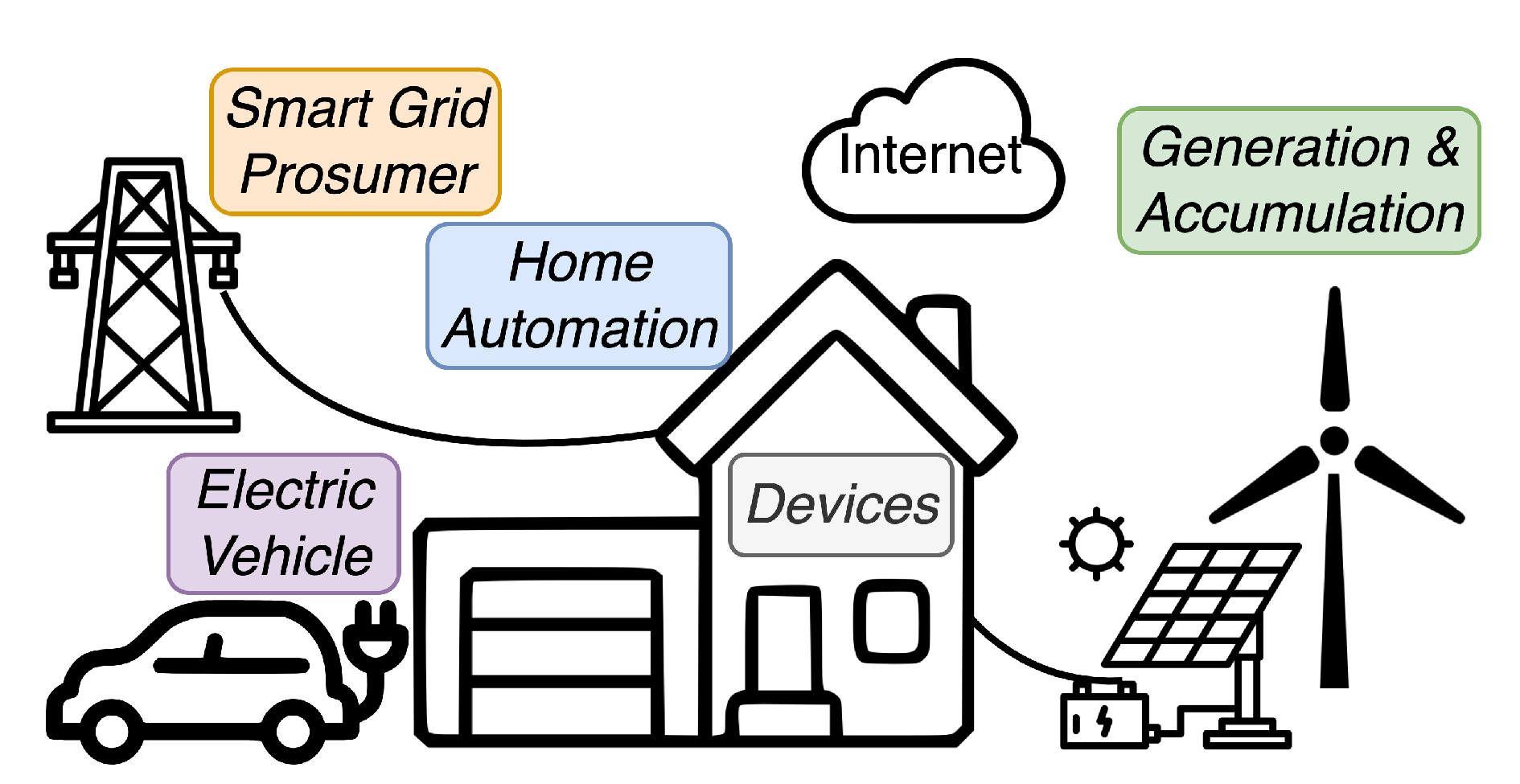



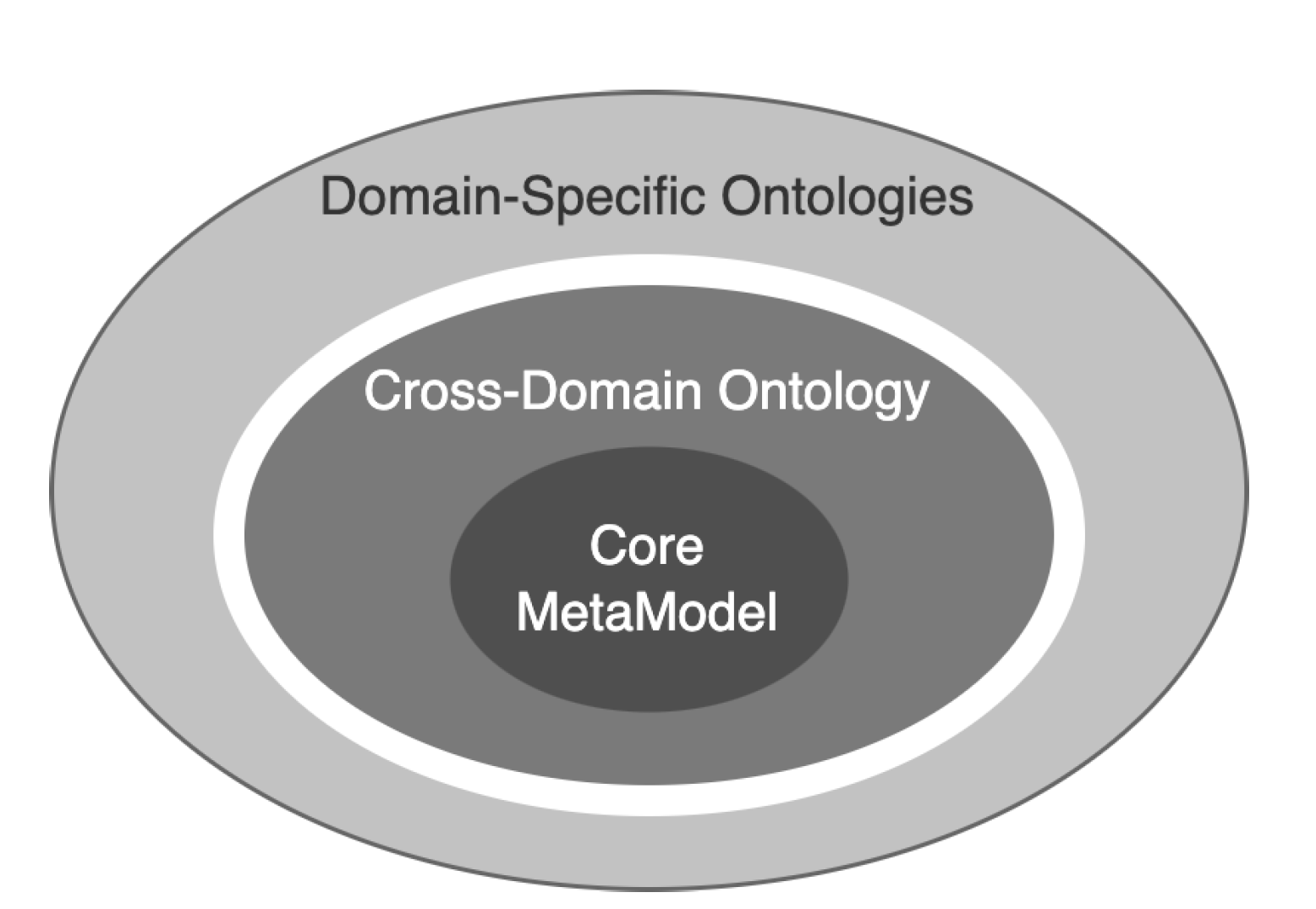
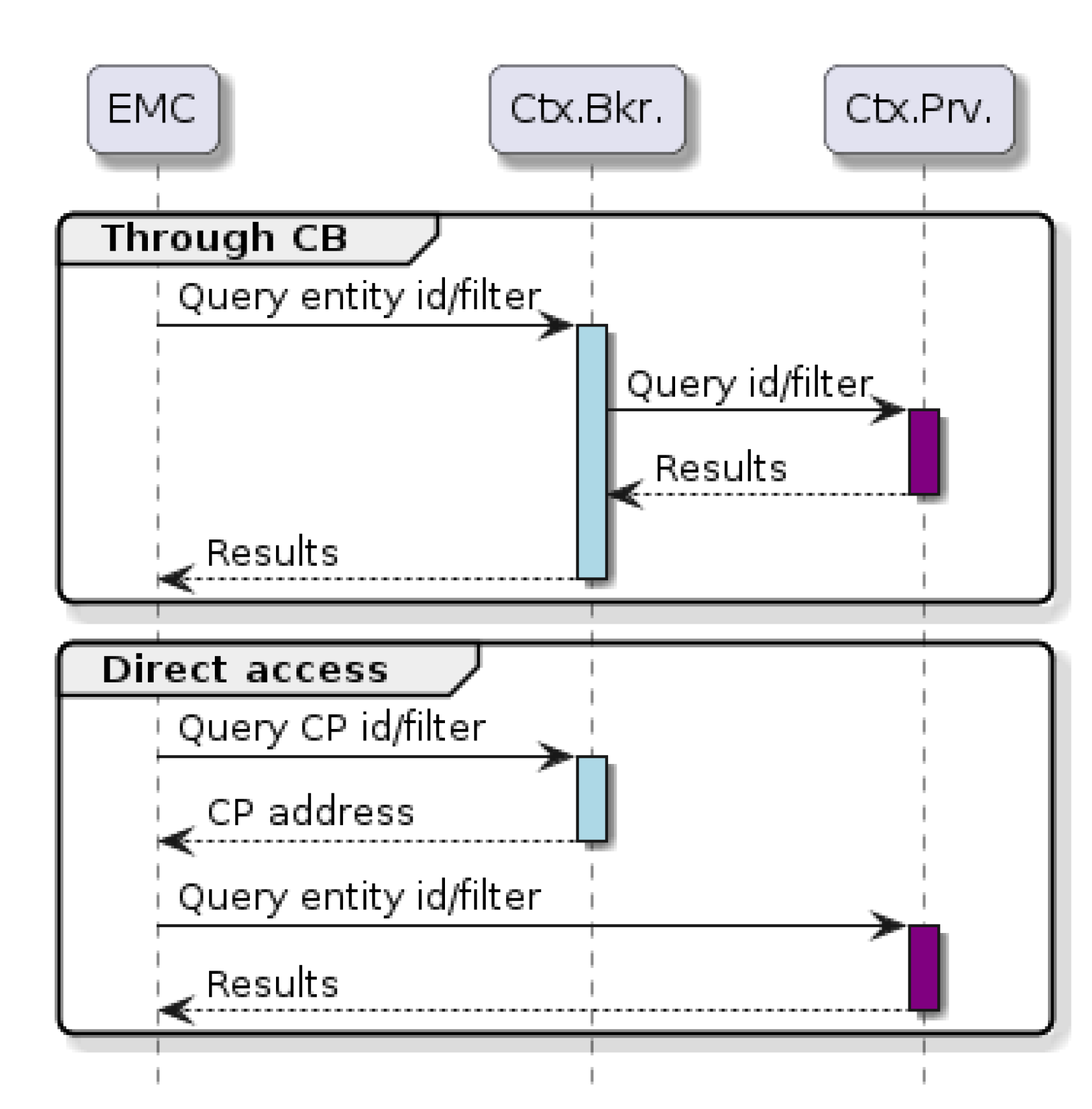
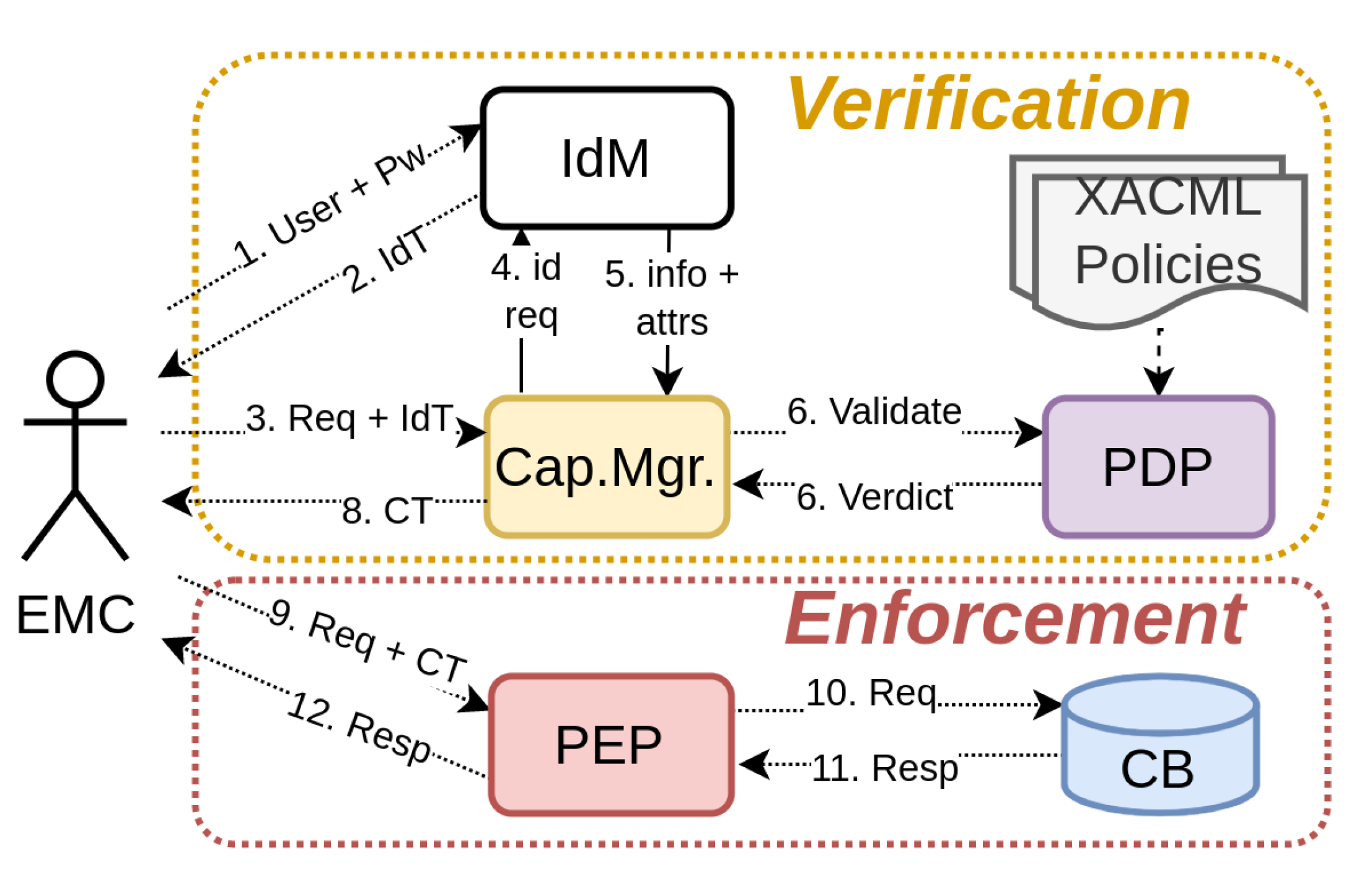
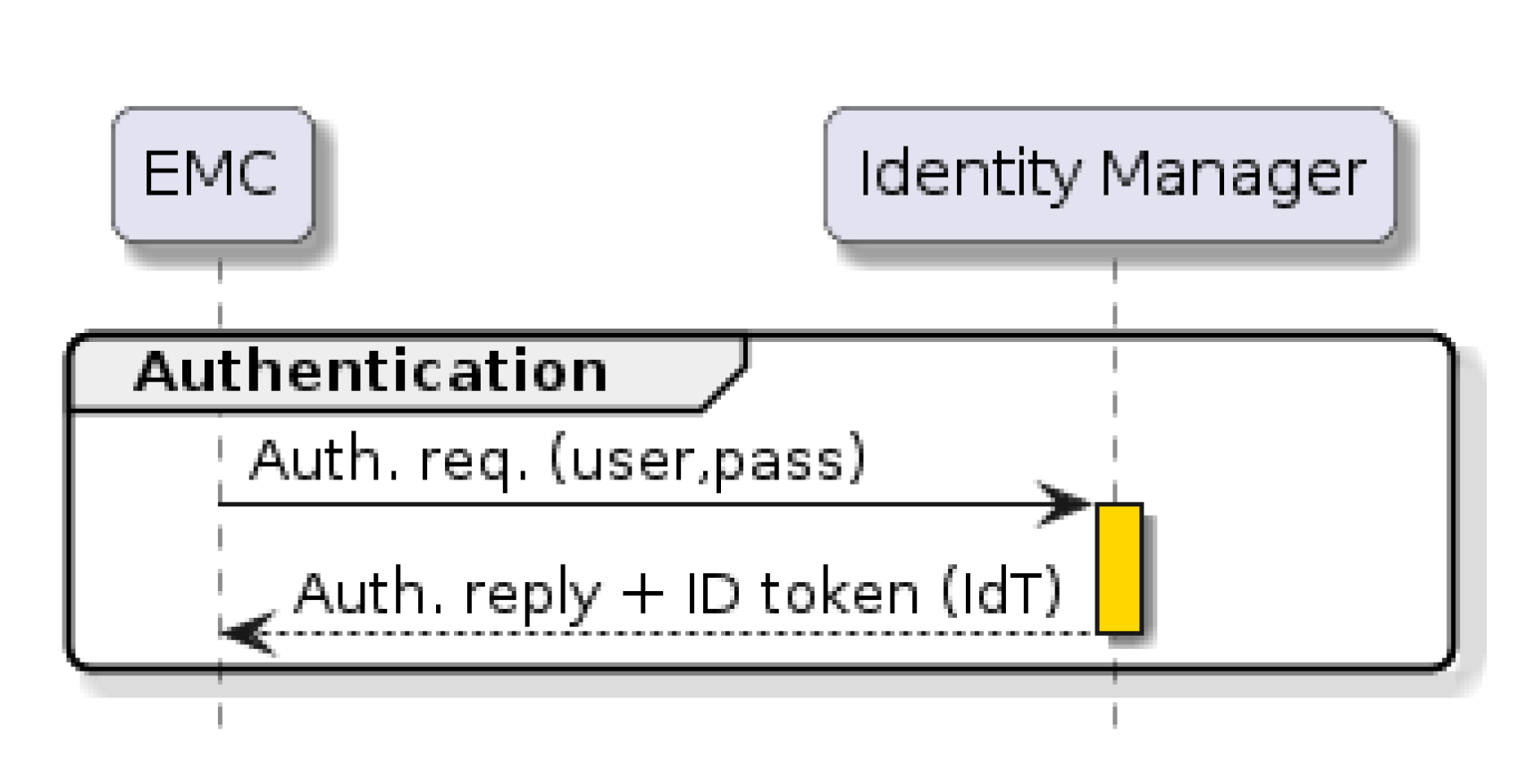

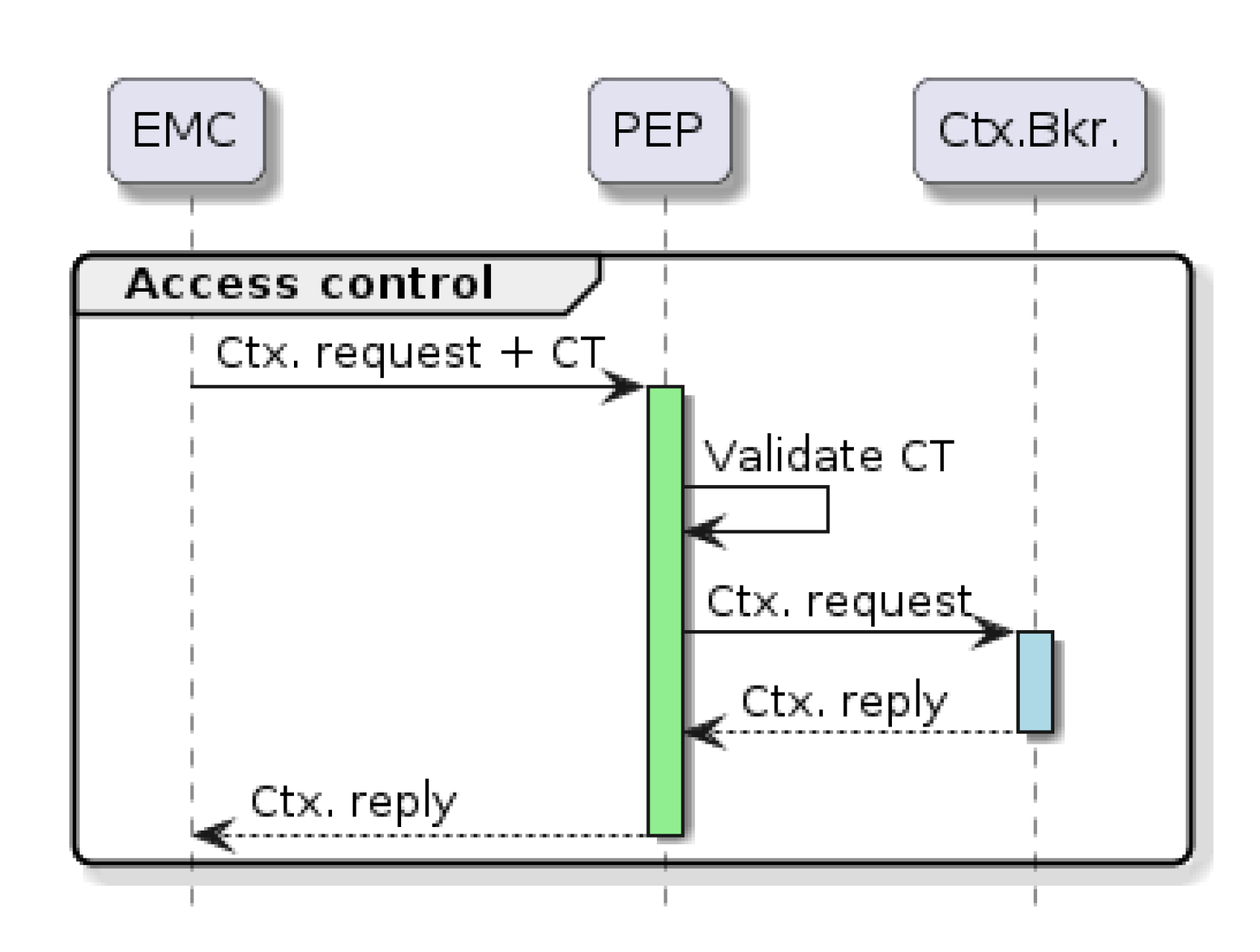
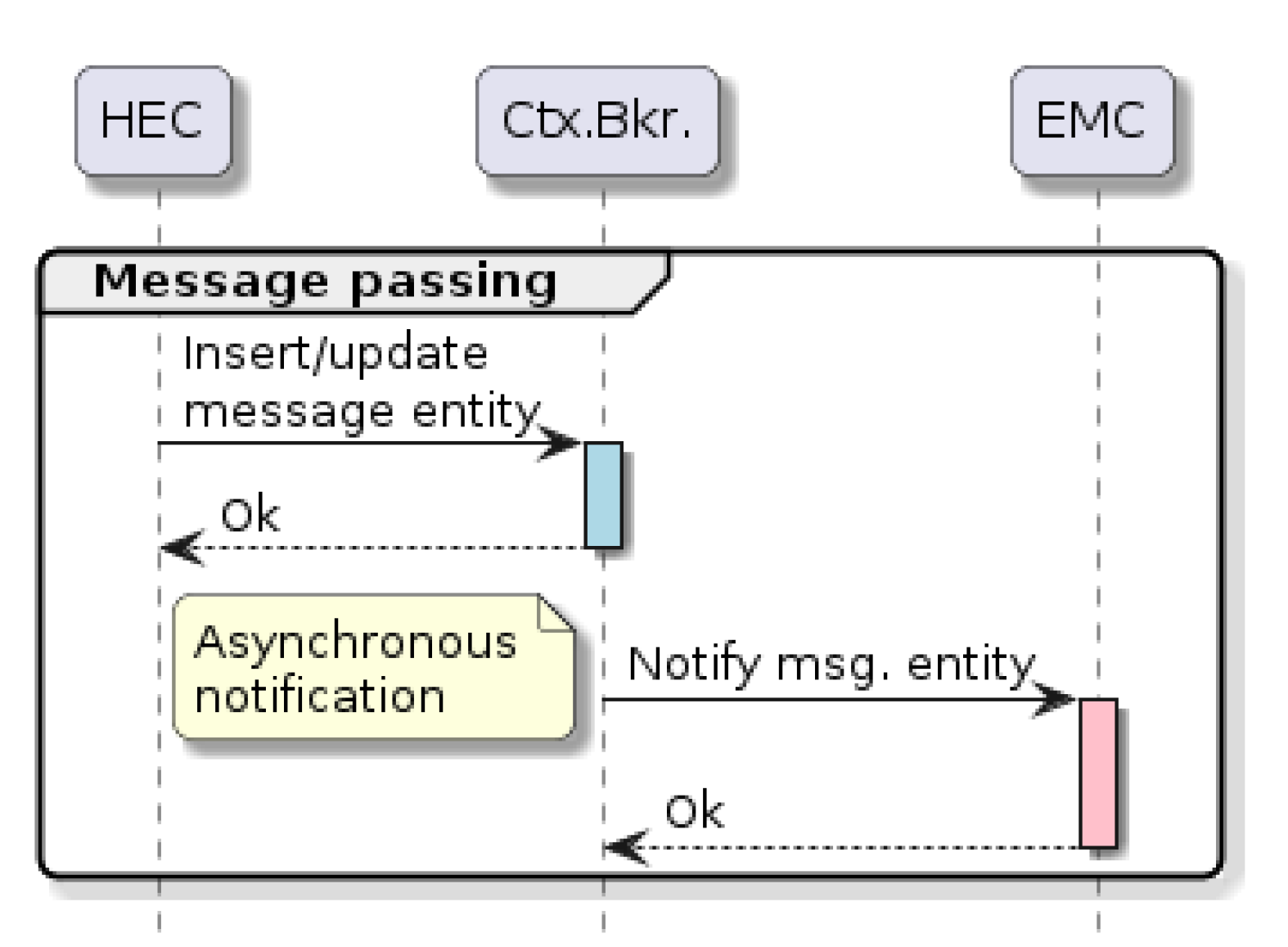
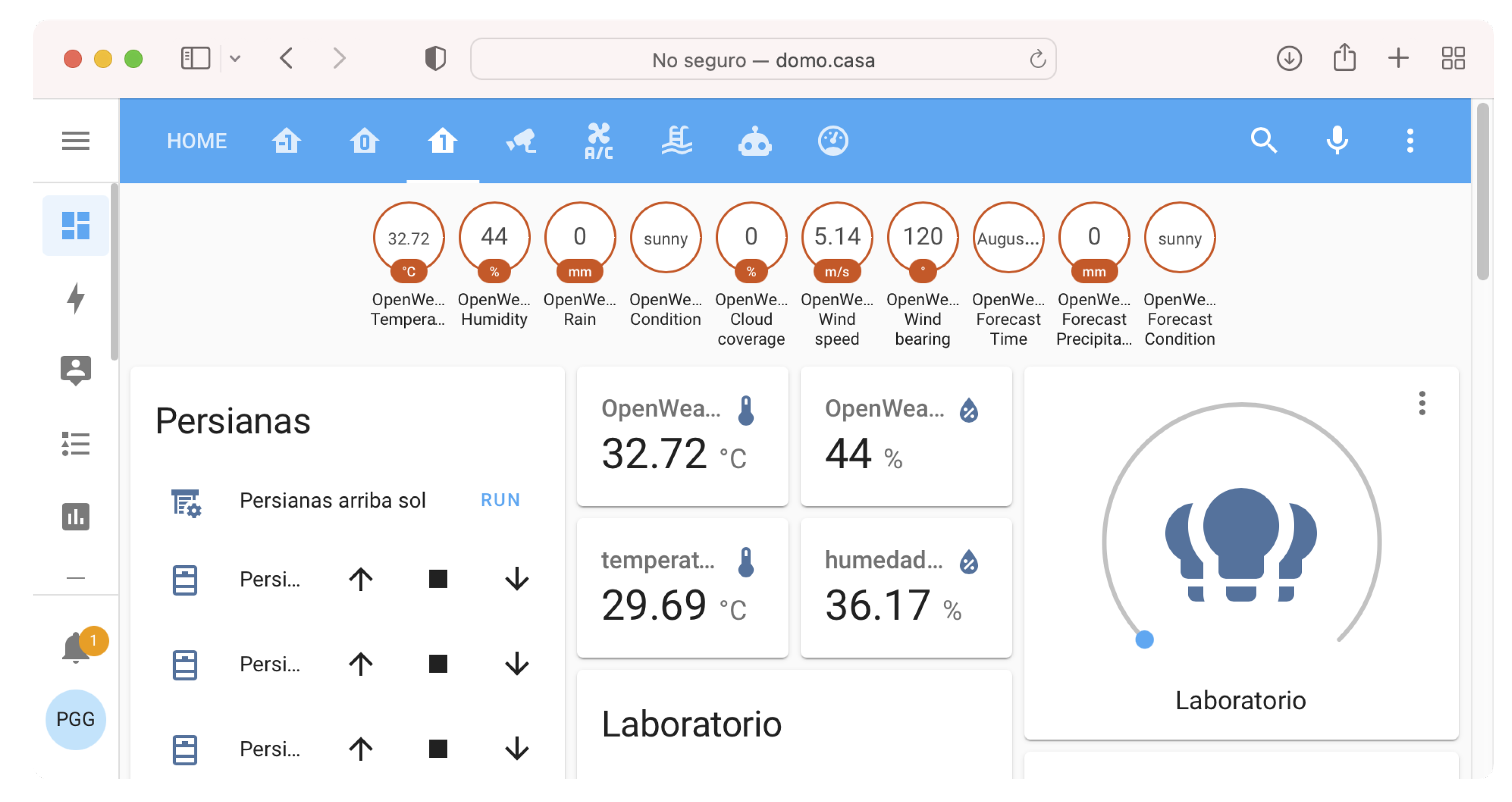

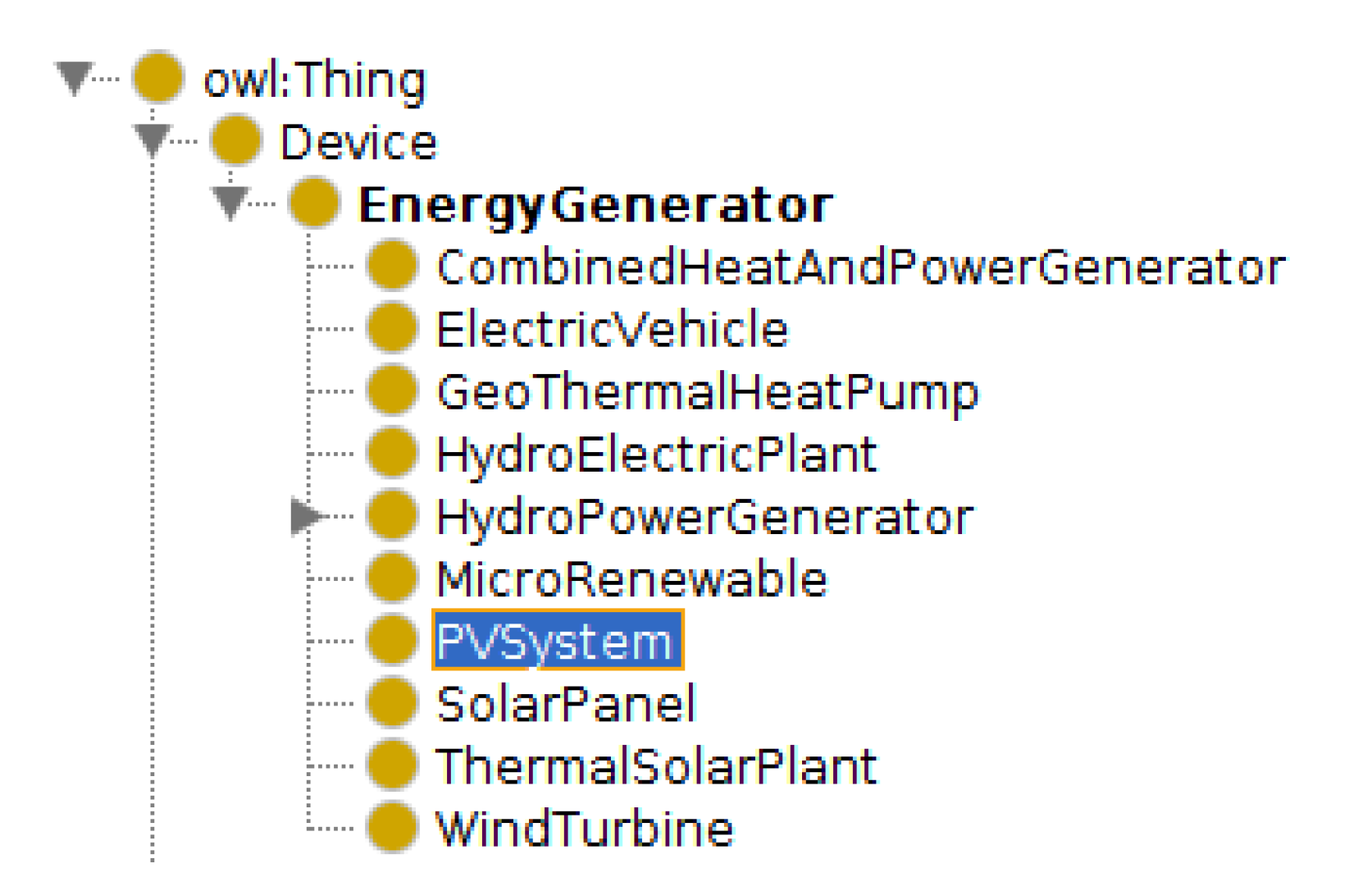
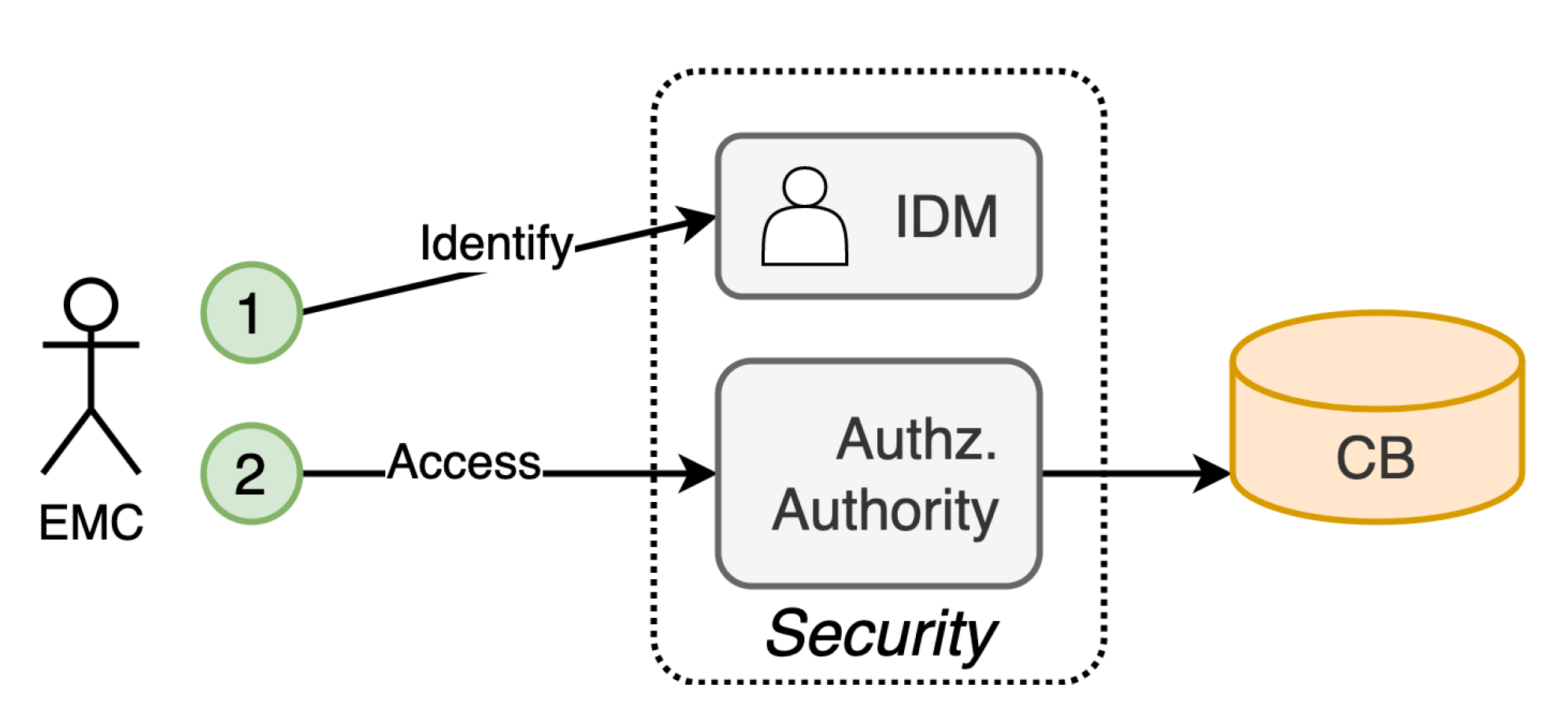

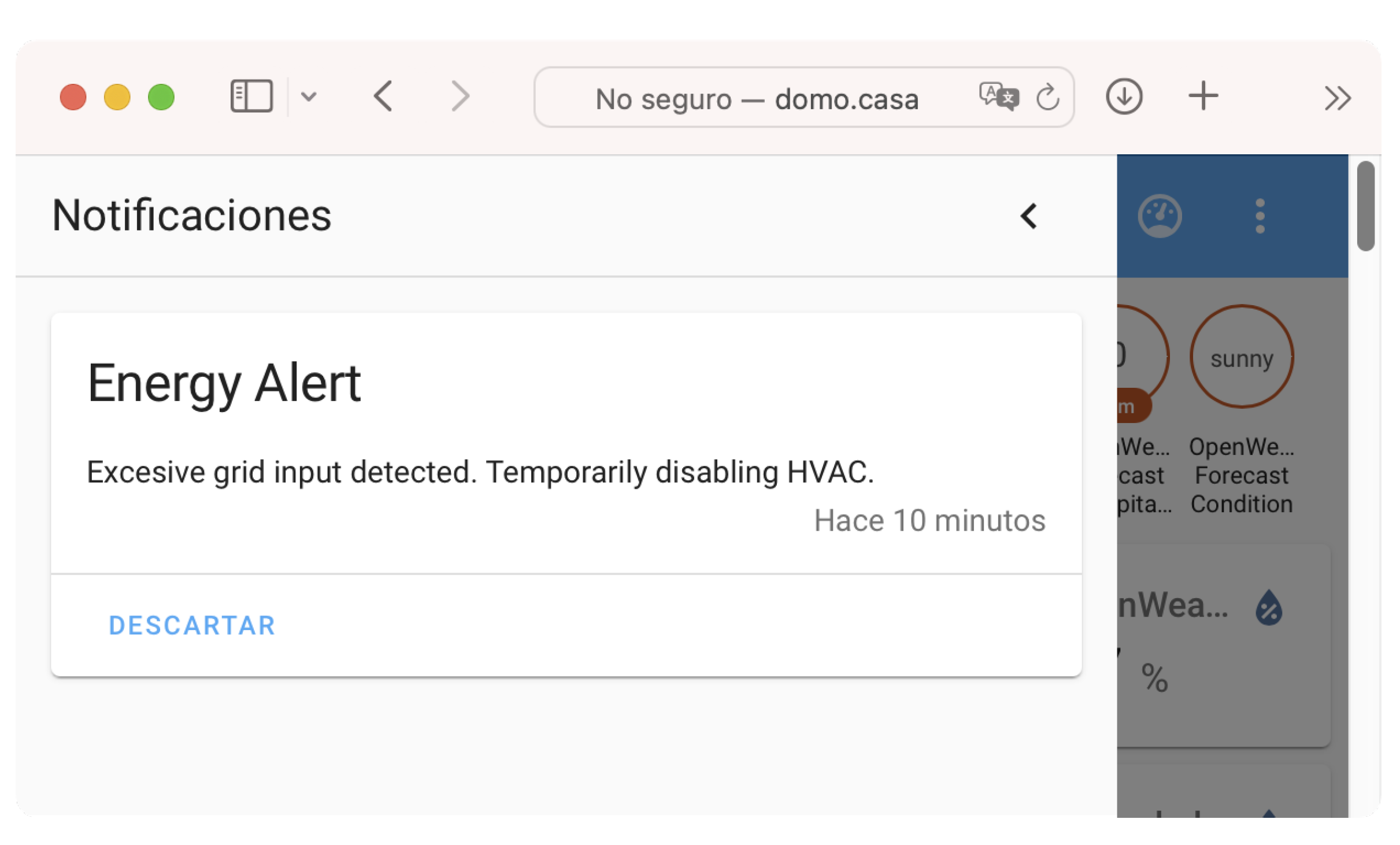

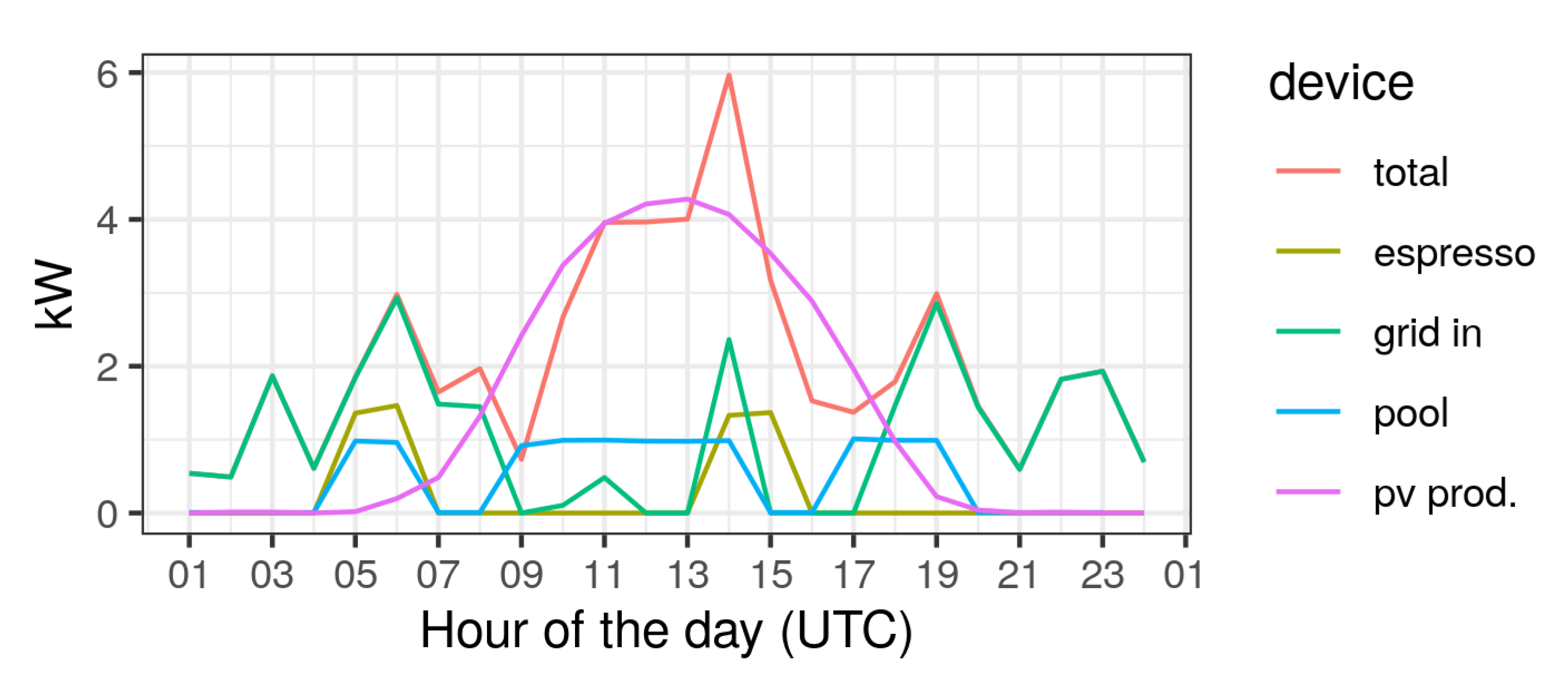
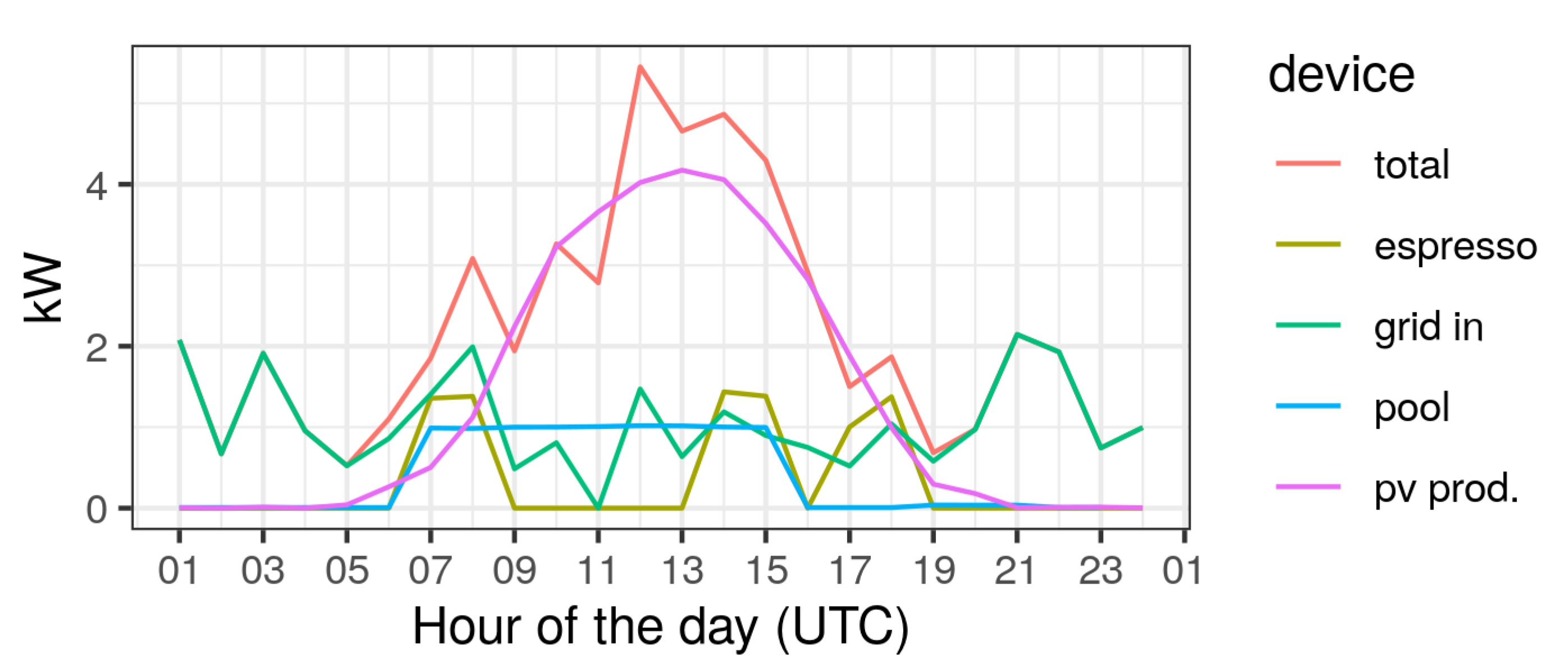
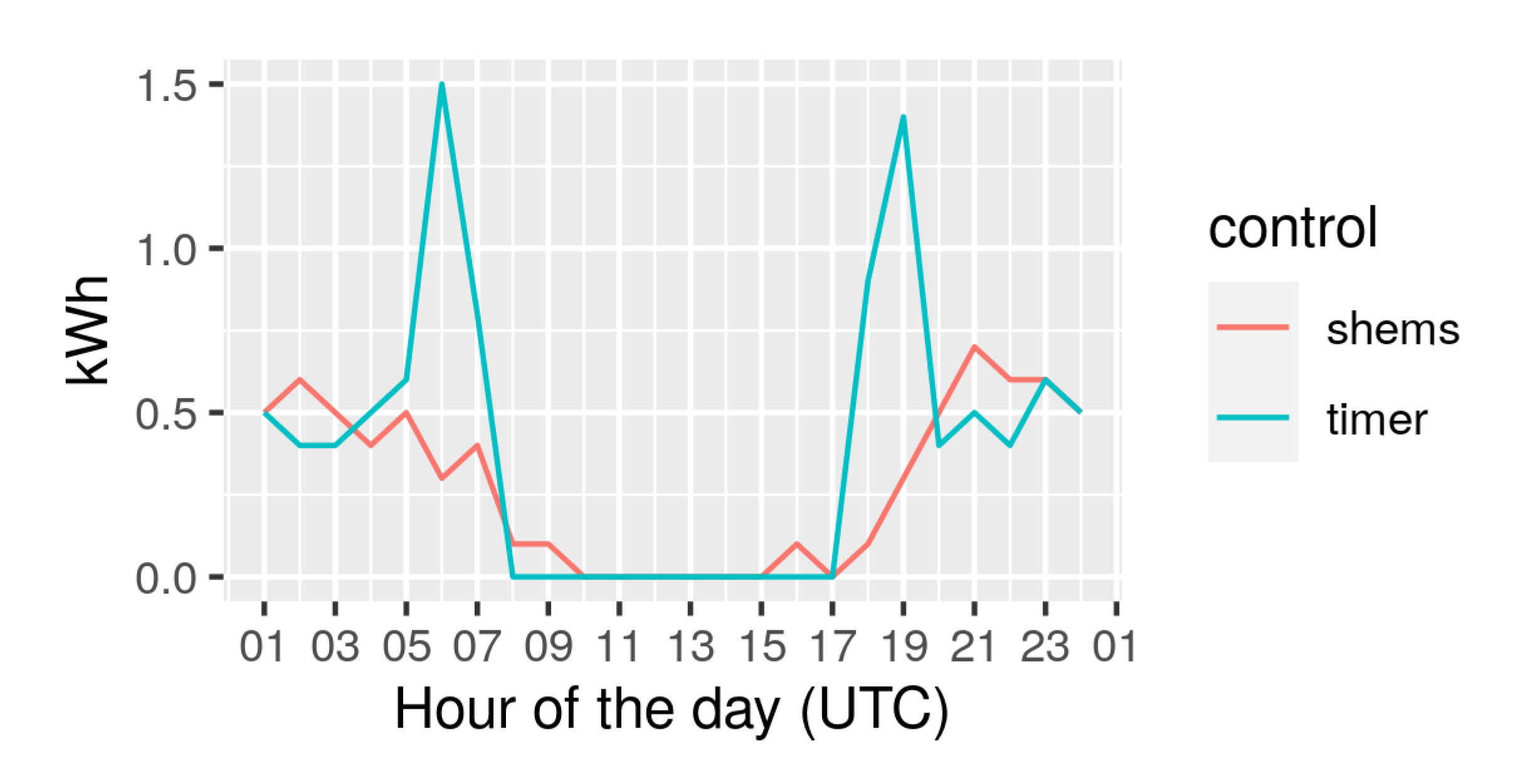
| Ontology | Application Field |
|---|---|
| OSEIM [23,24] | Semantic reasoning for intelligent energy management. |
| SARGON [25] | Smart grid and building energy automation. |
| DABGEO * [26] | Integration of smart home energy-related ontologies. |
| EnergyUse [27] | Home energy saving advice. |
| MAS2TERING [18] | Supporting USEF implementation on smart grid. |
| SAREF4EE [28,29] | Interoperability of smart appliances. |
| DNAS [30] | Energy efficiency through occupant behaviour. |
| ProSGv3 [31] | Modelling prosumer-oriented smart grid. |
| MIRABEL [32] | Flexibility description for demand response. |
| BonSAI [33] | Modelling of service-oriented smart building. |
| ThinkHome [22,34] | Home energy assessment and device control. |
| Ontology | HEC | HEG | HAS |
|---|---|---|---|
| DNAS [30] | X | X | |
| BonSAI [33] | X | X | X |
| MIRABEL [32] | X | ||
| MAS2TERING [18] | X | ||
| SARGON [25] | X | ||
| OSEIM [23,24] | X | X |
| OWL | NGSI-LD |
|---|---|
| Individual | Entity |
| Class | Entity type |
| Object property | Relationship or nested property |
| Datatype property | Property |
| Element | Description |
|---|---|
| Home automation system | Home Assistant, running in a Raspberry Pi 4, 4 GB RAM |
| Photo voltaic array | 14 panels, 480 W rated |
| Inverter | Ingecon Sun Storage 1Play |
| Battery | 32 cells in series, LiFePo4 chemistry, 280 Ah rated capacity |
| Battery management system | Batrium WatchMon-CORE, 2 Batrium CellMate K9 and ShuntMon 500 A |
| Grid power meter | Carlo Gavazzi EM112 |
| Grid tariff | 5.4 KW peak input, with constant pricing. PV surplus feed-in possible with constant price rebate |
| Appliance controller * (Coffee machine) | TP-Link HS110 Smart Plug (with inbuilt power meter), controlled by Home Assistant |
| Pool controller | Node-RED based, running in a Raspberry Pi zero. Power-meter integrated via Modbus. |
Publisher’s Note: MDPI stays neutral with regard to jurisdictional claims in published maps and institutional affiliations. |
© 2022 by the authors. Licensee MDPI, Basel, Switzerland. This article is an open access article distributed under the terms and conditions of the Creative Commons Attribution (CC BY) license (https://creativecommons.org/licenses/by/4.0/).
Share and Cite
Gonzalez-Gil, P.; Martinez, J.A.; Skarmeta, A. A Prosumer-Oriented, Interoperable, Modular and Secure Smart Home Energy Management System Architecture. Smart Cities 2022, 5, 1054-1078. https://doi.org/10.3390/smartcities5030053
Gonzalez-Gil P, Martinez JA, Skarmeta A. A Prosumer-Oriented, Interoperable, Modular and Secure Smart Home Energy Management System Architecture. Smart Cities. 2022; 5(3):1054-1078. https://doi.org/10.3390/smartcities5030053
Chicago/Turabian StyleGonzalez-Gil, Pedro, Juan Antonio Martinez, and Antonio Skarmeta. 2022. "A Prosumer-Oriented, Interoperable, Modular and Secure Smart Home Energy Management System Architecture" Smart Cities 5, no. 3: 1054-1078. https://doi.org/10.3390/smartcities5030053
APA StyleGonzalez-Gil, P., Martinez, J. A., & Skarmeta, A. (2022). A Prosumer-Oriented, Interoperable, Modular and Secure Smart Home Energy Management System Architecture. Smart Cities, 5(3), 1054-1078. https://doi.org/10.3390/smartcities5030053










